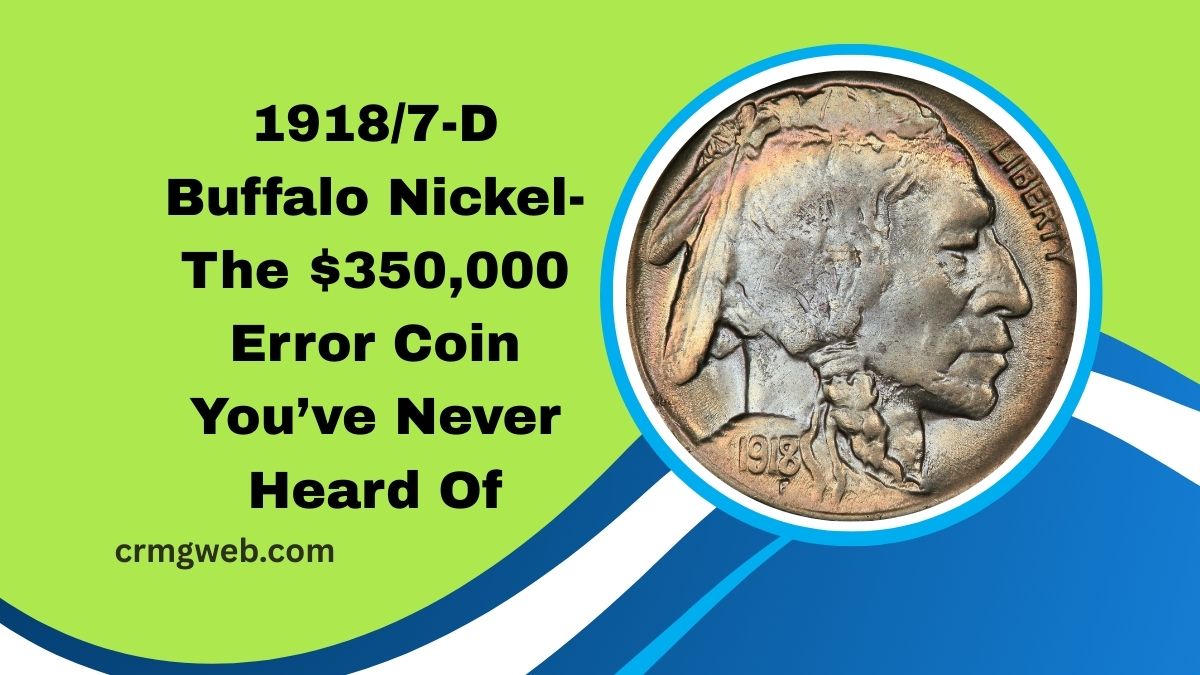The 1918/7-D Buffalo Nickel stands as one of the most intriguing and valuable error coins in American numismatic history.
This rare overdate variety has captivated collectors and investors alike, with pristine examples commanding prices upwards of $350,000.
Despite its significance, many are unaware of this coin’s fascinating story and the factors contributing to its immense value.
The Birth of the Buffalo Nickel
Introduced in 1913, the Buffalo Nickel, also known as the Indian Head Nickel, was designed by sculptor James Earle Fraser.
The coin’s obverse features a composite portrait of a Native American chief, while the reverse showcases an American bison, commonly referred to as a buffalo.
This design aimed to honor the indigenous heritage and the wildlife of the United States. The Buffalo Nickel was minted until 1938, when it was replaced by the Jefferson Nickel.
Understanding the 1918/7-D Overdate Error
The 1918/7-D Buffalo Nickel is distinguished by a notable overdate error, where the numeral “8” in the date was stamped over a pre-existing “7”.
This anomaly occurred due to the Mint’s practice of repurposing unused dies from the previous year to meet the high demand for coinage in 1918. As a result, the remnants of the “7” are visibly discernible beneath the “8” on the coin’s obverse.
Additionally, genuine specimens of this variety exhibit a distinctive left-tilting “D” mintmark, indicating their production at the Denver Mint.
Rarity and Market Value
The scarcity of the 1918/7-D Buffalo Nickel significantly enhances its desirability among collectors.
It is estimated that only 85 to 110 uncirculated examples exist, with a mere handful graded as MS65 or higher.
In February 2024, a specimen graded PCGS MS65+ achieved a record-breaking sale price of $511,875 at a GreatCollections auction.
Circulated versions of this coin also command substantial sums, with values ranging from approximately $630 to $29,000, depending on their condition.
Identifying Authentic 1918/7-D Nickels
Due to its high value, the 1918/7-D Buffalo Nickel has been the target of numerous counterfeiting attempts. Collectors should be vigilant for the following authenticating features:
- Overdate Detail: The underlying “7” beneath the “8” should be clearly visible without the aid of magnification.
- Mintmark Characteristics: The “D” mintmark should exhibit a leftward tilt and be positioned between the words “FIVE” and “CENTS” on the reverse.
- Die Crack: Many genuine specimens display a die crack extending from the Native American’s hair braid toward the jawline.
Given the prevalence of forgeries, it is advisable to have potential acquisitions authenticated by reputable grading services such as PCGS or NGC.
Comparative Analysis of Key Buffalo Nickel Varieties
To contextualize the significance of the 1918/7-D overdate, consider the following comparison with other notable Buffalo Nickel varieties:
| Year | Variety | Estimated Value Range | Notable Features |
|---|---|---|---|
| 1916 | Doubled Die Obverse | Up to $281,750 | Prominent doubling on the obverse date |
| 1918 | 1918/7-D Overdate | Up to $511,875 | Clear overdate with visible “7” under “8” |
| 1937 | 3-Legged Buffalo | Up to $150,000 | Missing front leg on the buffalo due to die polishing |
| 1926 | Low Mintage (S Mintmark) | Up to $322,000 | Lowest mintage in the series, especially rare in high grades |
The 1918/7-D Buffalo Nickel epitomizes the allure of numismatic errors, combining historical significance with rarity to achieve remarkable value in the collectors’ market.
Its unique overdate feature, coupled with limited surviving specimens, renders it a prized asset for enthusiasts and investors alike.
For those fortunate enough to encounter this elusive coin, meticulous authentication and grading are paramount to ensuring its authenticity and preserving its esteemed status in the realm of rare coinage.
FAQs
What caused the overdate error on the 1918/7-D Buffalo Nickel?
The overdate error resulted from the Mint’s practice of repurposing unused dies from 1917 by stamping the new 1918 date over the existing one, leading to the visible “8” over “7” anomaly.
How can I verify the authenticity of a 1918/7-D Buffalo Nickel?
Authentic specimens exhibit a clear overdate with the “7” visible beneath the “8”, a left-tilting “D” mintmark, and often a die crack from the hair braid to the jawline. Professional authentication by grading services like PCGS or NGC is recommended.
Why is the 1918/7-D Buffalo Nickel so valuable?
Its value stems from its rarity, distinctive overdate error, and high demand among collectors. Pristine examples in mint condition are especially scarce, further elevating their market worth.
